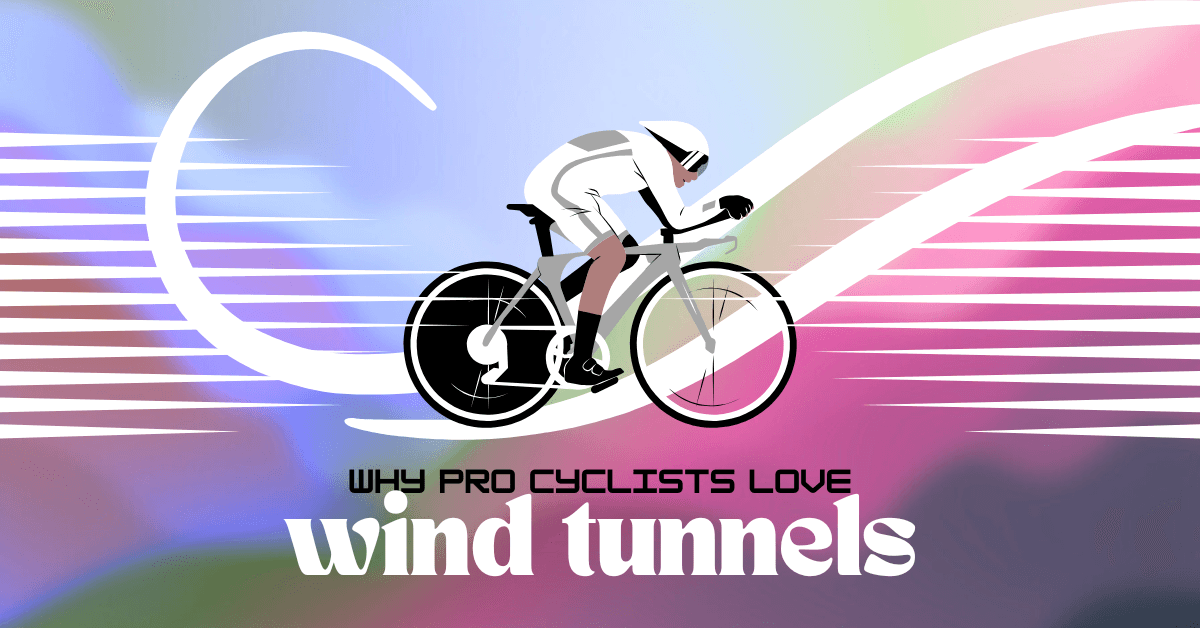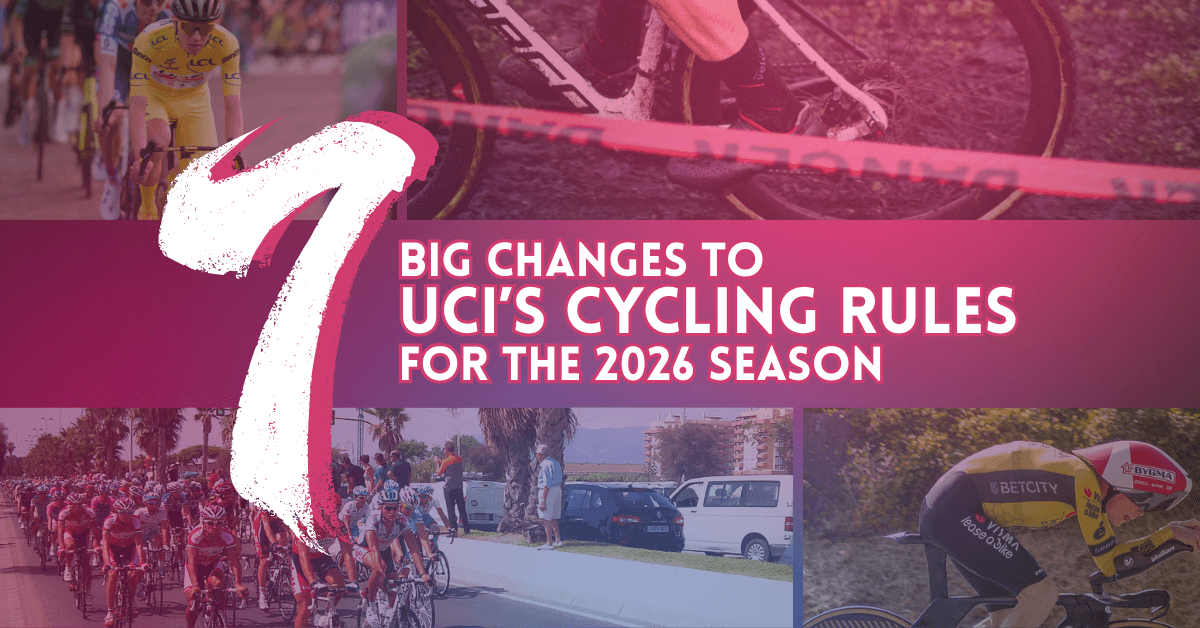The Vuelta a España’s unique character — a Grand Tour that emphasizes climbing and aggressive racing – has carved out its niche in the cycling calendar. For many viewers, this identity is precisely what makes the race so compelling. And Stage 9 was a perfect demonstration of La Vuelta’s personality! Let’s discuss the 2024 edition so far — and why the race through Spain is never “over” ‘til Madrid.
Embed from Getty ImagesToday’s stage was the classic ups and downs of La Vuelta.
Did you watch the stage today? If so, you might have found yourself surprised by the GC saga that unfolded before our eyes.
Stage 9 exemplified the unpredictable and exciting nature of the Vuelta a España, with significant time gaps being created through bold, long-range attacks in the mountains. It also highlighted the importance of individual rider strength in shaping the overall race at this point.
Adam Yates from UAE Team Emirates was the victor of the stage with an impressive long-range solo attack in the Sierra Nevada mountains.
The stage featured a double ascent of the Alto de Hazallanas, preceded by the Puerto de El Purche climb. Yates attacked from a 26-rider breakaway, dropping his last companion David Gaudu on the first ascent of Hazallanas. He was about 60 kilometers from the finish when he made his decisive move and remained solo until the finish line. Richard Carapaz also took a bold solo attack strategy for this stage, finishing second and moving up to third in the GC standings.
The current race leader, Ben O’Connor, retained the red jersey. He finished alongside his primary competitor, Primož Roglič, about 4 minutes behind Yates.
Embed from Getty ImagesAs such, the GC saw some significant reshuffling from the day’s racing action. O’Connor still leads Roglič by almost four minutes, but Carapaz jumped up to 3rd. Yates jumped from 27th to 7th overall!
Like many Vuelta stages from 2024 and years past, bold racing paid off for riders like Yates and Carapaz. This is especially important for UAE Team Emirates, who lost their leader João Almeida to COVID. The race now heads into a rest day with the GC battle still wide open!
Read more: Vuelta a España: Adam Yates stamps authority on stage 9 solo victory (CyclingNews)
Why is the Vuelta so unpredictable?
Whenever we think the Vuelta is all wrapped up, it turns on its head again. The Vuelta’s unpredictability often catches viewers off guard. The element of surprise can build excitement for fans, constantly guessing who will emerge as a breakout stage winner or new GC contender. In fact, the unpredictability of the Vuelta keeps viewers on the edge of their seats for the entire three-week race.
But why? Is it ever truly “over” before Madrid? We’d argue that no, it’s not! And we love that!
The Vuelta occurs towards the very end of the cycling season. Some riders are in peak form after building all year, while others are fatigued from earlier races. This mix creates unpredictable performances and motivations… especially with the World Championships coming soon after the Vuelta’s conclusion. With less pressure than the mid-season Tour de France, riders often take more risks, leading to exciting racing action.
Embed from Getty ImagesWhat about the terrain? The “rampas inhumanas” of La Vuelta may be scary to bystanders, but this is just where some riders feel in their element. The race often features a mix of steep, punchy climbs and longer ascents, favoring different types of riders across each stage — and sometimes multiple types in one stage. Shorter, more intense parcours also encourage aggressive attacks from the very start. Spain’s climate features extreme heat, cold, and rain, adding another layer of challenge.
This year’s GC landscape is wide open. Almost every stage can impact the overall standings. Without dominant team leaders like we often see in the Tour, the racing tends to be less controlled and open for breakout stars. For many riders, the Vuelta is a chance to salvage their season or prove themselves. Also, by this point in the season, some riders are changing teams, which can affect how hard they’re willing to work for their current team.
Read more: Tour Disappointments: 5 Riders with Something Left to Prove
La Vuelta emerges from the miasma of all these different factors. It is truly a one-of-a-kind race!
Embed from Getty ImagesBen O’ Connor’s surprise victory… and his defense of the red jersey.
When Ben O’Connor claimed his solo victory on Stage 6 and took the GC lead, he may have garnered a few groans from viewers at home.
O’Connor’s portrayal in Netflix’s Unchained Tour de France series drew mixed reactions from cycling fans. Some found his emotional intensity and candid moments refreshing, while others criticized him for seeming so self-absorbed and dramatic. AG2R’s storyline was front and center throughout the show, and O’Connor’s frequent displays of frustration and disappointment often came across as immature or unprofessional to the audience.
Read more: THE NEW SEASON OF “TOUR DE FRANCE: UNCHAINED” WILL HAVE YOU BINGE WATCHING (Riding With)
Embed from Getty ImagesBut it’s important to remember that reality TV presents a curated version of events. Viewers’ perceptions are influenced by the editing and storytelling choices made by the production team. From a pure narrative perspective, O’Connor’s story is compelling. He’s an Australian who made it big in the mostly European peloton, overcoming many challenges and setbacks along the way. His breakthrough 4th place in the 2021 Tour de France, including a spectacular stage win, is the kind of underdog triumph that makes for great storytelling.
In cycling documentaries, a lot depends on how much access the filmmakers get and how the rider performs during the race. O’Connor had two particularly bad Tours during the filming of Unchained. This would naturally influence both his portrayal and how the audience perceives him.
Read more: This is How Netflix’s Unchained Missed One of the Best Moments of the 2023 Tour de France
Clearly, Ben O’Connor is not afraid to go on long-range attacks — which makes for exciting racing and good television. However, as many also noticed in Unchained (and his past Grand Tours,) he is prone to cracking on difficult mountain climbs and losing GC time to his rivals. For example, in the 2021 Tour de France, O’Connor showed a lot of vulnerability in the final week, losing time on stages 17 and 18 in the Pyrenees. While he didn’t completely crack, he did struggle to maintain his 4th place GC position.
So what can Ben O’Connor do to hold onto the red jersey?
O’Connor is inexperienced in defending a Grand Tour lead over three weeks. The pressure of holding the red jersey and the constant attacks from rivals could potentially lead to a bad day… or, well, a really, really bad day. His team and his own mental fortitude will be key in managing this pressure and avoiding a significant time loss that could cost him the lead.
Embed from Getty ImagesDon’t worry — it’s not a hopeless situation for Ben! He currently has a significant lead of 3:53 over his nearest rival Roglič. This gives him some room for a bad day without necessarily losing the jersey. When on form, O’Connor is a strong and steady climber. If he can maintain this consistency, it will be his best defense against attacks. By racing defensively and following wheels rather than initiating attacks, he can conserve energy and limit his risk of cracking.
O’Connor’s team, Decathlon AG2R, has also shown they’re committed to defending his lead. Having strong teammates like Felix Gall to support him in the mountains is crucial. Knowing limits and not trying to follow every acceleration from rivals can help O’Connor and his teammates avoid going into the red and risking a major collapse. The entire team should also focus on using the rest day on Monday for recovery and maintaining focus and unity, which will be crucial as the race progresses.
What makes La Vuelta special?
Without knowing anything about Ben O’Connor from Netflix, would you find him a sympathetic figure? Of course! Stories humanize athletes, making them relatable. In cycling, where riders often suffer in silence for hours, knowing their backstories helps viewers empathize and connect with them.
Embed from Getty ImagesAs in all sports, narratives provide the context to all performances. A rider finishing 15th might seem unremarkable on paper, but if we know they’re coming back from a career-threatening injury, they become inspiring. Sports are inherently dramatic, but the stories amplify this. The tale of a domestique finally getting their chance to shine, or a veteran chasing one last victory, adds emotional weight to the race’s outcome. And Grand Tours like the Vuelta span three weeks, allowing for story arcs to develop, twist, and resolve in a way that’s uniquely satisfying.
So what about La Vuelta? In many ways, the stories from Spain are more special than any other Grand Tour. Riders often consider themselves representatives of their countries or regions. Their stories become part of a larger narrative of national or local pride! That’s because in many European countries, cycling is deeply embedded in the culture.
Spanish cycling is steeped in tradition. Stories from Spanish riders on the roads of Spain (and yes, even inside a grocery store) connect life and culture to the sport’s rich history, creating a sense of continuity and importance.
Embed from Getty ImagesBut it’s also not just Spanish riders. Understanding every rider’s motivations — whether it’s overcoming personal tragedy, proving doubters wrong, or achieving a lifelong dream — gives viewers something to root for beyond results. Cycling is a sport of suffering. The stories of riders overcoming physical, mental, or external challenges resonate with many people’s own life experiences.
All in all, narratives transform what could be seen as simply watching people ride bikes into an epic saga of human endeavor, strategy, and emotion. This is perhaps why cycling, despite its complexities and controversies, continues to have lasting popularity on a global scale.
The second week in Galicia will bring even more drama to the race.
Ready for more? Viewers can look forward to the second week of racing, as the Vuelta moves to the Galicia region of Spain.
Embed from Getty ImagesThe cooler weather in Galicia could benefit riders who struggle in extreme heat. This might allow some stage hunters who’ve been holding back to come to the fore. From a viewer’s perspective, Galicia offers stunning landscapes, from rugged coastlines to lush green hills, making for spectacular TV viewing. The mix of coastal roads, rolling hills, and steep climbs will test the all-around abilities of each rider still in the race — whether they’re going for GC or not!
While there are intense mountain climbs, Galician climbs are often shorter and steeper than those in the Sierra Nevada. This could favor explosive climbers over steady grinders. With the race entering its second week, team strategies will become even more crucial. We might see some teams trying to isolate the race leader on these challenging stages.
Embed from Getty ImagesAs riders accumulate fatigue, we might also start seeing some surprising performances – both good and bad. Keep an eye out for riders who’ve been quietly conserving energy to shine in this second week.
Of course, there’s always room for a GC shake-up. With challenging terrain and cooler conditions, significant changes in the overall standings could happen — fast.
Read more: How to Watch the 2024 Vuelta A España: A Complete Guide
What should the emerging GC favorites do next?
Stage 9 put some clear GC contenders on the table. We know who’s looking strong and who has a chance to compete for the top three. However, each rider and their team will need to approach the coming weeks with cautious tactics to secure a podium spot in Madrid.
Embed from Getty ImagesPrimož Roglič is still the favorite for the race, despite struggling with his back injury from the Tour de France. He may launch attacks on the steep climbs where he typically excels. This including Stage 10 on Tuesday, which features a mid-stage vertical cliff that will have weaker contenders scrambling in fear! His team will provide sufficient help to isolate O’Connor, and he can aim to gain time in the individual time trial as well. Richard Carapaz and Enric Mas currently pose the biggest threat to him, so he needs to stay vigilant for any sudden moves by these two.
Richard Carapaz may be expected at this point to continue making aggressive long-range attacks in mountain stages. After all, he used the same approach in the third week of this year’s Tour de France to net the King of the Mountains jersey. However, he may also collaborate with other GC contenders to isolate O’Connor and Roglič. His weakest area is his time trial, so he will need to minimize losses on the final day.
Enric Mas will also likely attack on the steepest climbs where he’s shown strength. Dropping Roglič on the final climb during Stage 9 was an impressive show of strength. However, an error on the descent resulted in him coming in with the favorites group after all. This Spanish rider will need to focus on not making any more unforced errors. If he succeeds, he has a good shot at a podium spot!
Embed from Getty ImagesNeedless to say, this Vuelta will likely be decided by a combination of aggressive racing in the mountains, time losses in individual weaknesses, and consistency over the coming stages. If someone has a particularly good or bad day… well, it might look like the race is “over.” But don’t forget! The unpredictable nature of the Vuelta so far suggests that the winner will need to be everything — tactically smart, physically strong, and unbelievably consistent — to overcome the challenges ahead.
There are twenty-one stages in Spain, and it looks like the GC riders will have to race all of them.
Are you looking forward to the second week of La Vuelta? Are you rooting for Ben O’Connor to hold onto his lead, or for one of the other competitors to break through? Let us know in the comments! ★










Leave a Reply